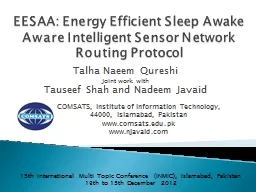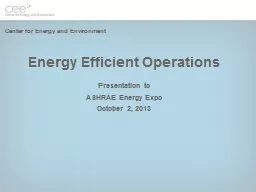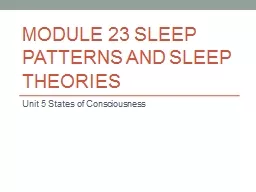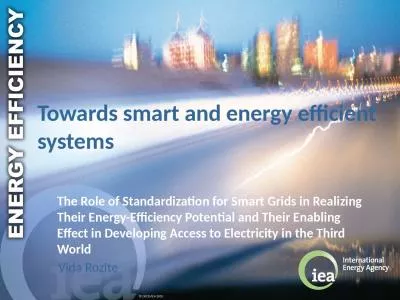PPT-EESAA: Energy Efficient Sleep Awake Aware Intelligent Senso
Author : danika-pritchard | Published Date : 2015-10-23
Talha Naeem Qureshi Joint work with Tauseef Shah and Nadeem Javaid COMSATS Institute of Information Technology 44000 Islamabad Pakistan wwwcomsatsedupk
Presentation Embed Code
Download Presentation
Download Presentation The PPT/PDF document "EESAA: Energy Efficient Sleep Awake Awar..." is the property of its rightful owner. Permission is granted to download and print the materials on this website for personal, non-commercial use only, and to display it on your personal computer provided you do not modify the materials and that you retain all copyright notices contained in the materials. By downloading content from our website, you accept the terms of this agreement.
EESAA: Energy Efficient Sleep Awake Aware Intelligent Senso: Transcript
Download Rules Of Document
"EESAA: Energy Efficient Sleep Awake Aware Intelligent Senso"The content belongs to its owner. You may download and print it for personal use, without modification, and keep all copyright notices. By downloading, you agree to these terms.
Related Documents














